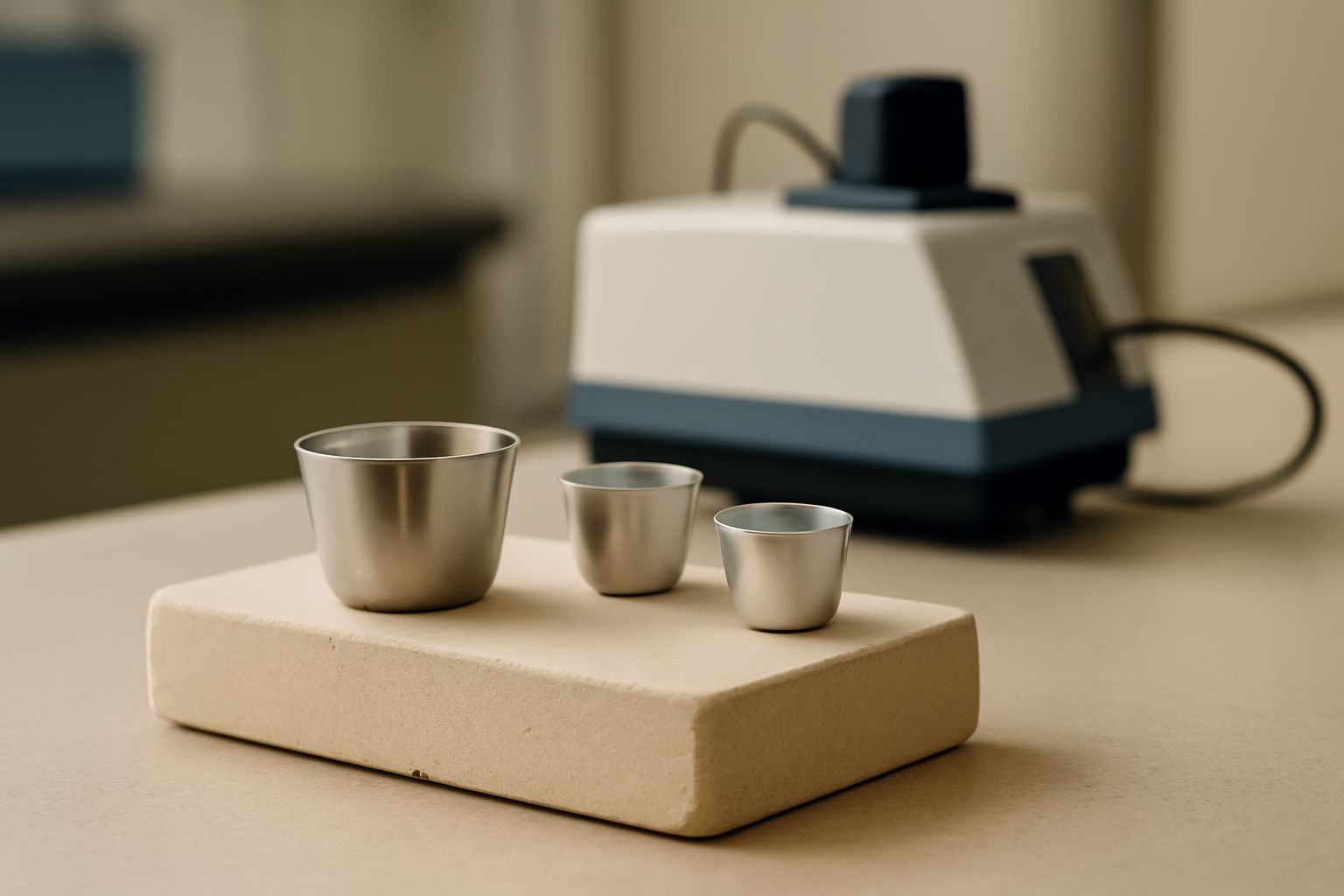Your cart is empty.
shop now
Your cart is empty.
shop now
Material scientists face pressure to achieve more reliable data and streamline processes. Choosing the right crucible solves many of their toughest challenges.
Differential thermal analysis crucibles provide stable, accurate measurements for heat capacity, melting points, and phase changes in modern research. They are a foundation for quality and innovation.

In advanced labs, every thermal test can mean the difference between a breakthrough and a mistake. Reliable sample handling leads to clear results. I have seen that when small changes in crucible style or purity are ignored, entire projects go off track. Recognizing which DTA crucible works best, and why, transforms research results and speeds up project timelines.
Measuring the smallest energy change in materials is tough. A DTA crucible protects the sample and guarantees clear, repeatable data across tests.
DTA crucibles hold samples during testing, isolating them from contaminants and making sure heat is applied evenly. This protects sensitive materials and supports precise heat flow measurement at each temperature point.
| Aspect | How DTA Crucibles Help | Reference |
|---|---|---|
| Sample Isolation | Prevents contamination, ensures purity during analysis | crucible |
| Even Heating | Maintains uniform temperature, reduces data errors | Differential Thermal Analysis |
| Reproducibility | Keeps testing conditions stable across multiple experiments | ScienceDirect |
| Material Compatibility | Matches with sample type for reliable phase transition data | phase transition |
When I started in material research, I underestimated how small design changes would improve results. Over time, I relied more on the special features of aluminum and platinum crucibles for critical lab tests.
Unstable sample holders can ruin a lab’s data. DTA crucibles ensure samples are not exposed to outside factors or uneven heating that cause errors.
Properly designed DTA crucibles shield samples from air, maintain heat transfer, and minimize mass loss. This setup allows clear detection of thermal events, like melting or phase shifts.
| Requirement | DTA Crucible Contribution | Reference |
|---|---|---|
| Atmosphere Control | Sealed crucibles protect against oxidation and humidity | oxidation |
| Thermal Conductivity | Materials like aluminum and platinum allow rapid, stable heat transfer | thermal conductivity |
| Sample Correction | Uniform shape/design reduces sample movement and thermal lag | thermal lag |
| Signal Accuracy | High-purity crucibles provide stable background, preventing signal noise | ScienceDirect |
I noticed a real difference when I changed from generic to high-purity pans. Precise DTA results allowed my teams to spot minor changes in alloys that would have slipped by in lower grade pans.
Lab conditions and testing goals change. The correct DTA crucible depends on the type of sample, the expected temperature, and the equipment used.
Match crucible material with the test temperature, sample chemistry, and equipment specs. Always check for full compatibility to avoid size or fitting problems during heats.
| Criterion | Consideration | Reference |
|---|---|---|
| Material | Aluminum for moderate heat, platinum for high-temp, resistant to corrosion | aluminum oxide |
| Size/Shape | Match sample mass/load. Confirm fit with DTA instrument | laboratory instrument |
| Seal/Closure | Needed for volatile samples or when working in an inert gas | inert atmosphere |
| Cost & Availability | Premium materials may have higher cost, but save experiment time and boost accuracy | laboratory equipment |
Once, I ordered the wrong pan size and lost an entire week of lab time. That situation taught me to review compatibility tables from trusted suppliers before placing an order. Reliable documentation is key in international lab supply logistics.
Some materials are very sensitive to heat and oxygen. Metals, polymers, and ceramics all need the protection a quality DTA crucible gives.
DTA crucibles support precise testing on metals, organic materials, ceramics, and polymers, each with different reaction profiles and temperature needs.
| Material Type | Why DTA Crucibles Matter | Reference |
|---|---|---|
| Metals & Alloys | Track melting, phase shifts, oxidation, and purity | alloy |
| Polymers | Detect glass transition, decomposition, compositional changes | polymer |
| Ceramics | Analyze sintering, crystallization, thermal stability | ceramic |
| Composites & Organics | Test thermal events in multi-phase samples under air/inert gas | composite material |
I worked on a project testing aerospace ceramics for extreme stability. It would not have been possible without controlled crucibles—the errors from open pans would have voided all the collected data.